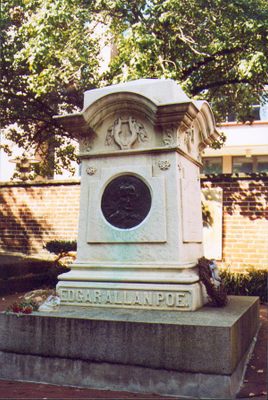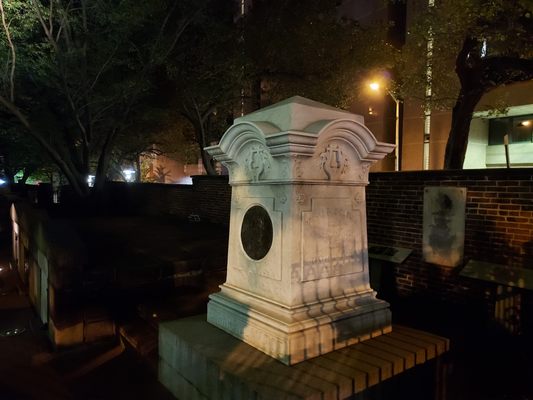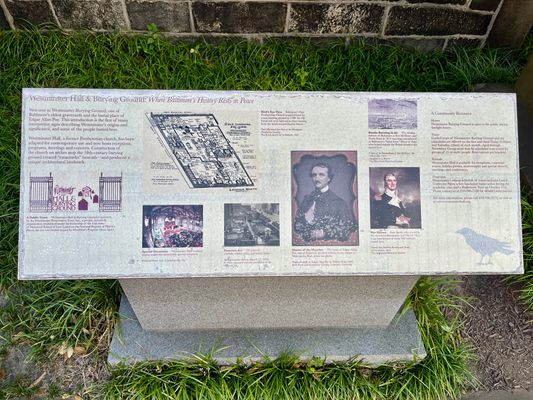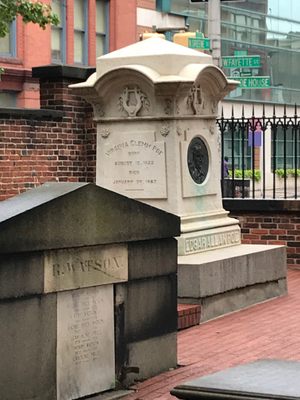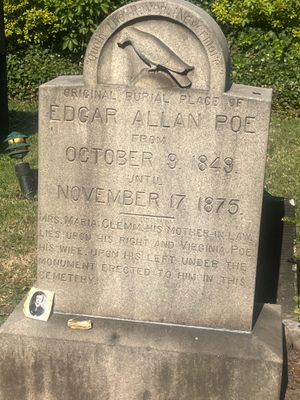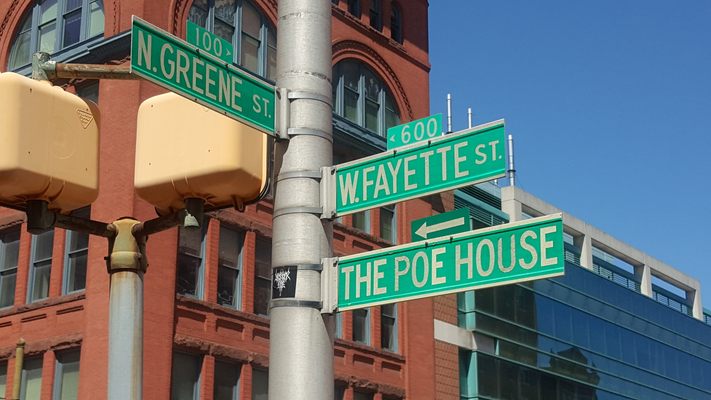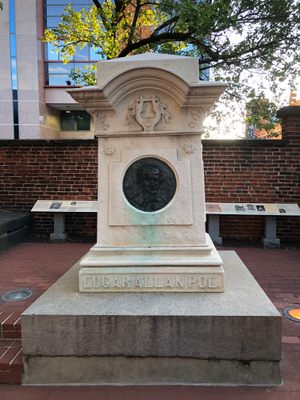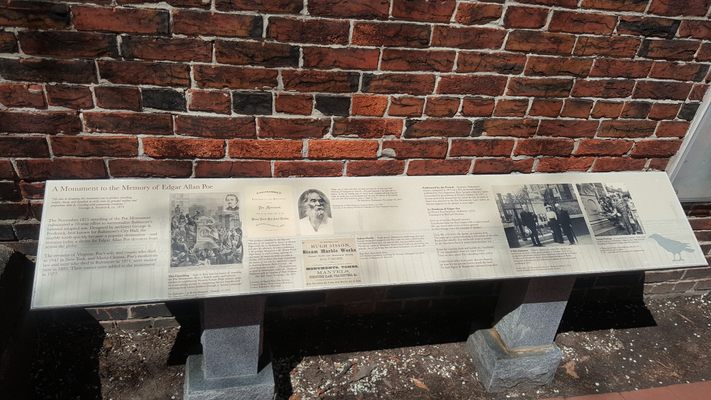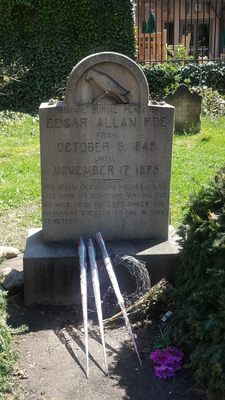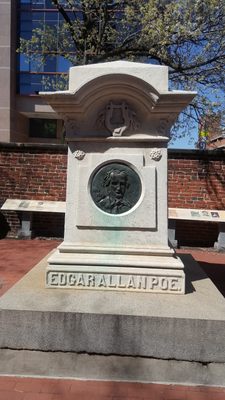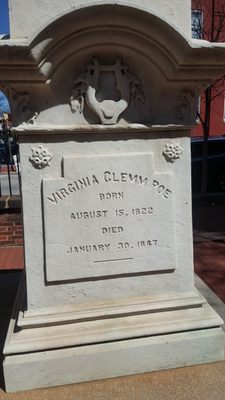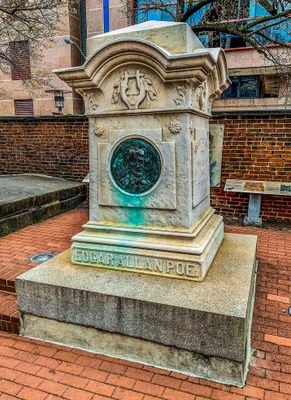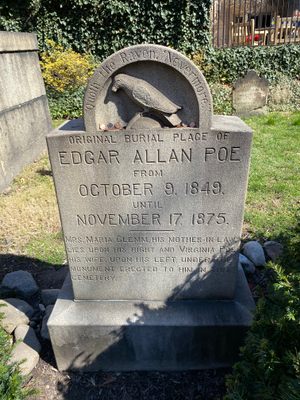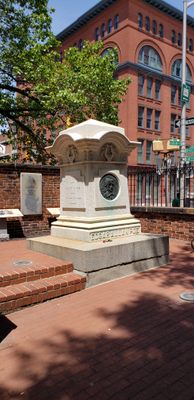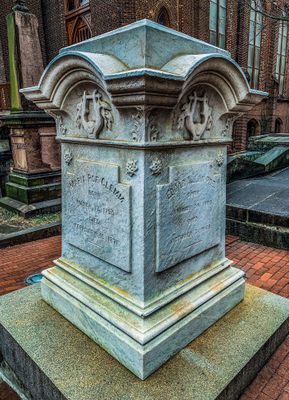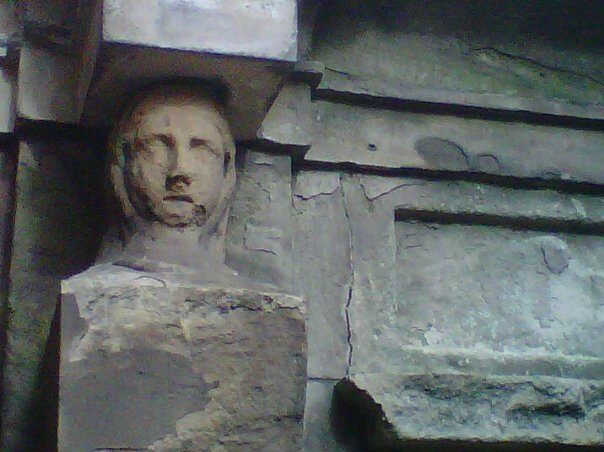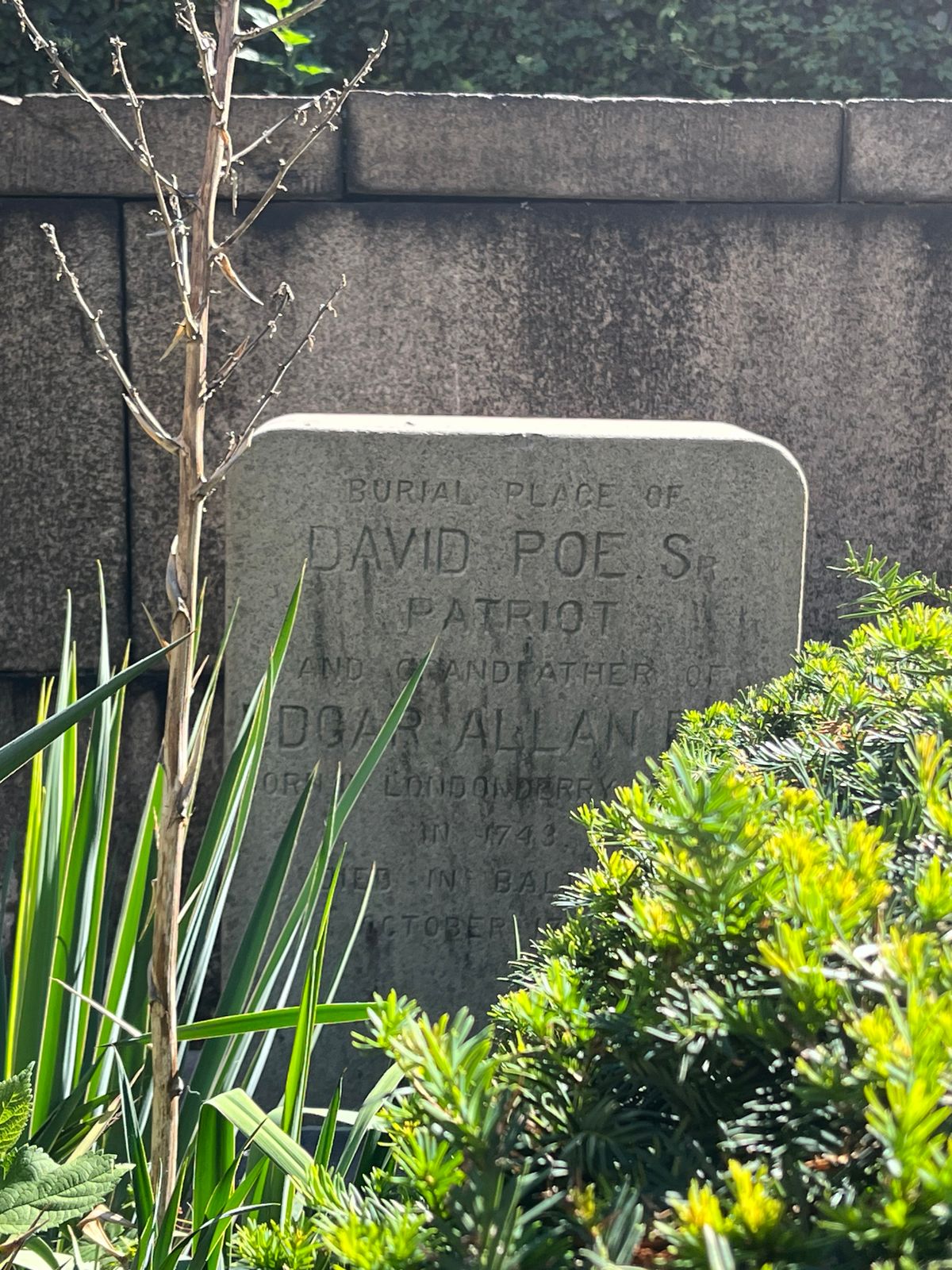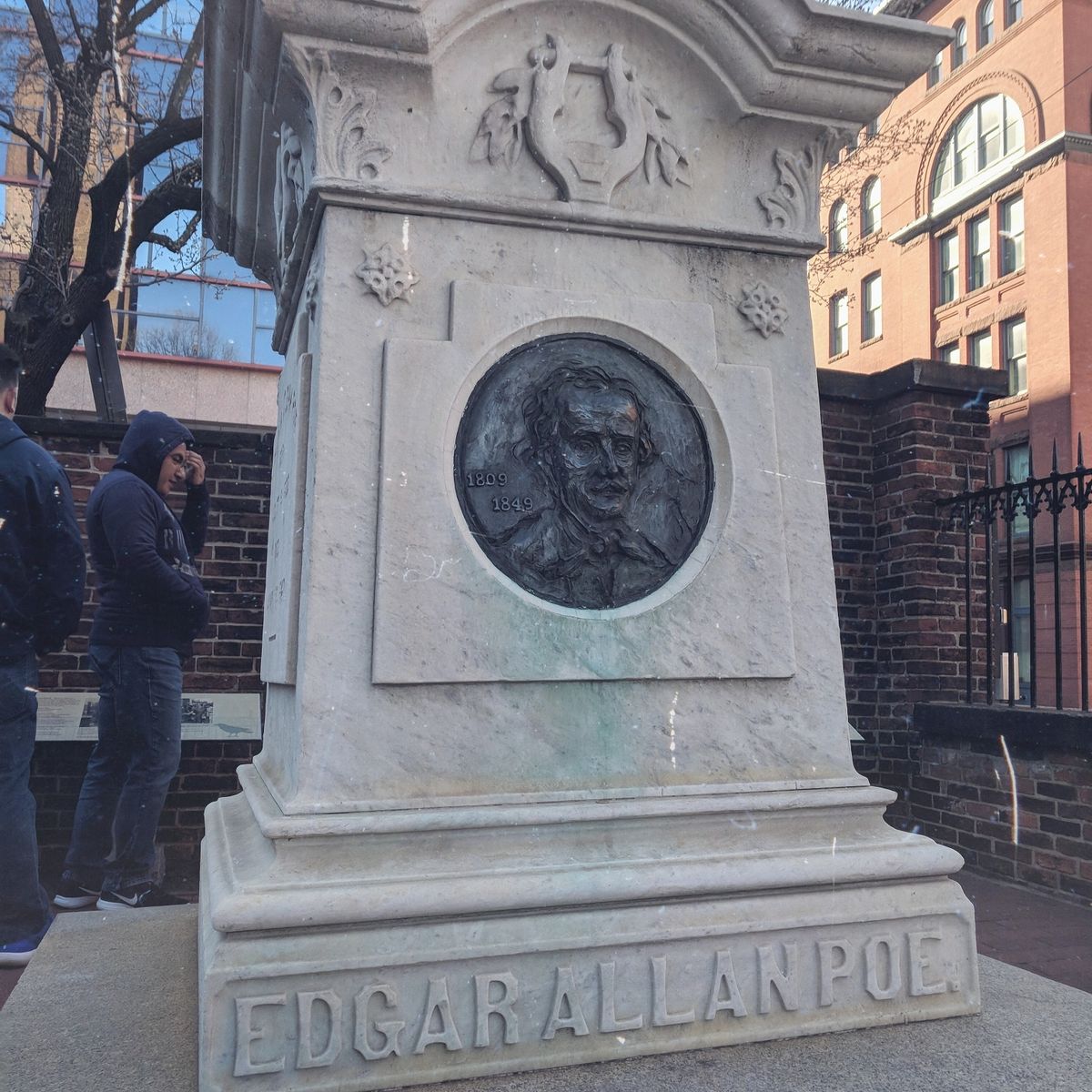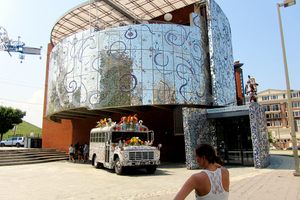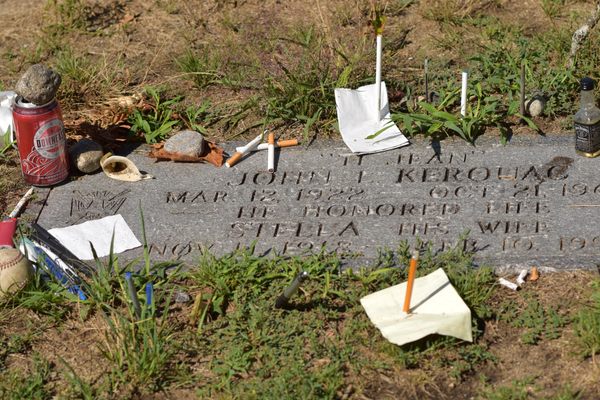About
Despite a prolific body of work, when Edgar Allan Poe died in 1849, he was originally buried in an unmarked grave.
When the grave was in danger of disappearing into the weeds altogether, George W. Spence undertook naming the spot with a simple sandstone marker—not with the famous writer's name, but with the simple and inexplicable number 80. As rumors of the unkempt grave began circulating throughout Baltimore and pressure grew to remedy the site, Edgar's cousin Neilson decided to order a proper marble headstone and promised to maintain the grave. However, while it was under construction, the original stone was destroyed in a freak train accident and he did not order another. The original stone only survives in the form of a paper sketch.
It was many years before a proper stone for the poet and author was erected to mark his passing. Donations had been collected for years before half the cost was donated by a Philadelphia man named George Childs in 1874. Shortly thereafter, a prestigious monument was designed by George Frederick, the same architect who designed Baltimore's City Hall. This time the only mishaps were in the engraving—which erroneously states that Poe's birthday was January 20th, rather than the 19th—and in the placement, as the monument was too large for the original burial site. It was decided that the front corner of the large cemetery was more suitable than the original spot for such an imposing marker.
After exhuming and moving the body, Edgar Allan Poe's final resting place was celebrated a year later in November of 1875 and was attended by the high society of Baltimore as well as American author Walt Whitman.
The saga of Poe's burial (or burials) does not end there. In 1913 another stone was laid in memoriam to commemorate the original location of his interment. However, it was placed incorrectly. It was quickly moved closer to the area of his unmarked grave, but it is reportedly still not in the correct position. Perhaps the people of Baltimore wanted their famous author to be shrouded in as many mysteries as he had written.
Related Tags
Know Before You Go
Paca and Fayette streets, downtown Baltimore
Published
February 5, 2014



